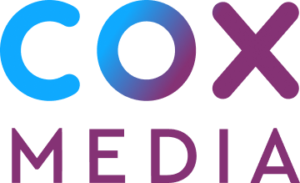Programmatic Technology Changes the Channel on TV Ad ROI [Breaking News]
Every television ad campaign ultimately faces the nagging question, “What’s the ROI?”
Historically, marketers running TV ads couldn’t deliver concrete metrics to answer that question. Hence the reason many diverted their dollars to online ads.
Now with programmatic technology, TV is back in the “metrics” game. Cable providers have greater access to information, which helps marketers find their target audiences faster and on whatever screen they’re viewing from—TV and beyond. Corporations and agencies are beginning to lean on that data, making smarter decisions based on measurable results.
It’s Not Where You Are, It’s Who You Reach
For savvy marketers today, it’s all about who is viewing your message rather than where or when. Improving the quality on traditional media measurement, cable providers leverage clickstream data from the web with traditional viewing data to offer a more expansive set of audience analytics. In other words, say, for example, your business or client manufactures golf clubs. Buying a TV ad using programmatic technology would allow you to specifically target male golf fans ages 25 to 35 that are in the market for that particular product.
Addressability Drives Sales
When executed correctly, creating and placing ads with specific segments in mind can significantly improve conversion rates. Take Kraft’s Kool-Aid for example. According to Advertising Age, the iconic beverage brand launched an addressable TV campaign that targeted high earning households with children between ages 7 and 12. It resulted in a 21 percent increase in sales and a 38 percent lift in household penetration.
Another great example, Adlens leveraged programmatic technology to run a targeted 30- second TV spot, which resulted in more than 3,000 units sold and a 700 percent increase in visits to the company’s website.
Real-time Reporting
Aside from providing enhanced insight into audiences, programmatic technology offers greater performance reporting. In the past, any type of information related to an ad’s effectiveness occurred weeks after it aired. The flexibility and speed with which digital video delivers results have become more attractive, as marketers are increasingly expected to provide details on ad performance in real-time.
With programmatic technology, marketers experience greater transparency and access to data, inventory, proposals and analysis. Additionally, new programmatic tools are built to integrate with existing business solutions, like accounting software, which better equips marketers to answer the ROI question.
Nice to Have or Must Have?
Until recently, programmatic technology has been viewed as a nice to have. Marketers have regarded it as a new and intuitive platform for TV ad buying and selling. However, the ability to capture and report quantifiable results is hard to ignore. Reports, like one issued by Strategy Analytics, even indicates that 20 percent of TV ad dollars will be spent on programmatic ads by 2018, up from less than one percent in 2013.
While buying and selling is certainly easier and more efficient with programmatic technology, its true value exists in the treasure trove of analytical resources it provides. With programmatic technology marketers now have assurance that their ads are reaching the right audiences and can develop exceedingly sophisticated campaigns.
Source: CommPRO
Connect with a Marketing Expert
Share Post On Social
Stay On Top of the Newest Business and Marketing Insights
Sign up for our monthly newsletter to get the latest industry information, business trends and marketing updates.
Connect With Your Local Marketing Expert
You know your business. We know advertising. Together, we can bring your business to more people. Contact a member of our team today. We’d love to help you grow.



